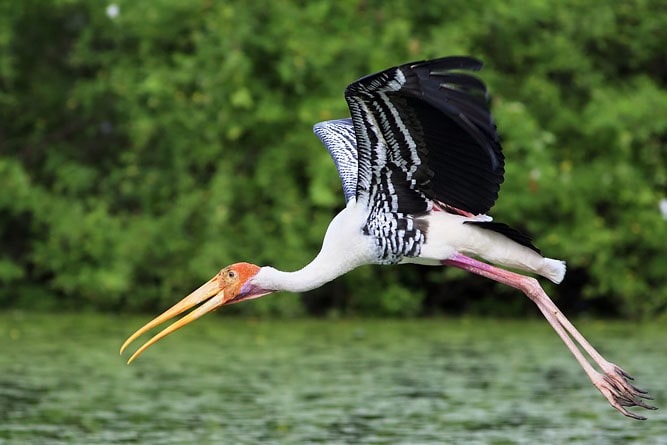Keoladeo National Park
Park, 62 km from Agra
should-see attraction
Opening hours: 6:00am-6:00pm Apr-Sep, 6:30am-5:30pm Oct-Mar
Address: Bharatpur, Rajasthan
Ticket price: Indian/foreigner ₹75/500, video ₹600/900, guide per hr ₹250, bike/binoculars rental per day ₹60/100
Visit duration: People typically spend 2 to 4 hours here
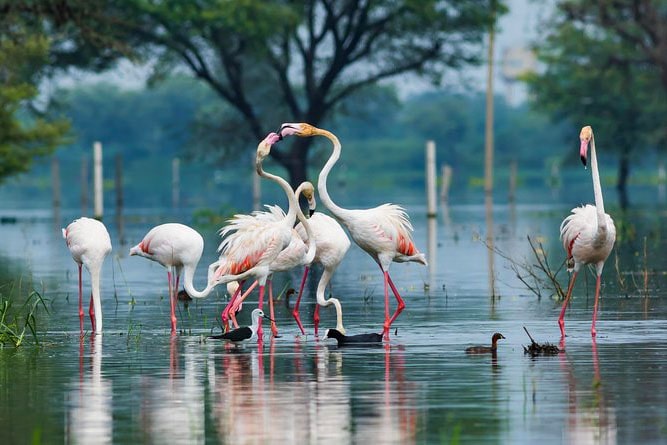
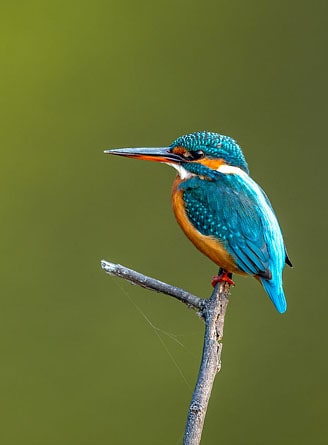
About Keoladeo National Park
Keoladeo Ghana National Park, also known as the Bharatpur National Park, is a bird and wildlife sanctuary near the city of Bharatpur in eastern Rajasthan. The sanctuary is a library of diverse flora and fauna which keeps it wildly busy with the chirping of birds, the cranes and their beautiful courtship dances all around the year.
The Keoladeo National Park has been acknowledged as the world’s most influential bird breeding and feeding environment that also houses the endangered Siberian Cranes. It is a UNESCO World Heritage Site.
History of Keoladeo National Park
The Keoladeo sanctuary was discovered by the Rajasthan royals about 250 years ago. Back then woods were located in a depression that used to get flooded during the monsoons. The Maharajas of Bharatpur, back in the 1850s, utilised the forest as hunting grounds. Later during the British rule in India, the viceroys enjoyed sessions of duck shooting events.
The national park got its name from the temple of God Shiva or Keoladeo settled in the woods. Between 1726 and 1763, the king of Bharatpur, Maharaja Suraj Mal constructed a dam called the Ajan Bund. The dam has been built at the junction of two rivers, the Gambhir and Banganga.
Ultimately by 1972, any rights retained by the Rajasthani royals were revoked by the government. 10th March 1982 marks the official establishment of the forest as a national park. Bans were put on the regional farmers from letting their cattle graze inside the premises. After three years UNESCO declared the reserve a World Heritage Site. The sanctuary now falls under the authority of the State of Rajasthan.
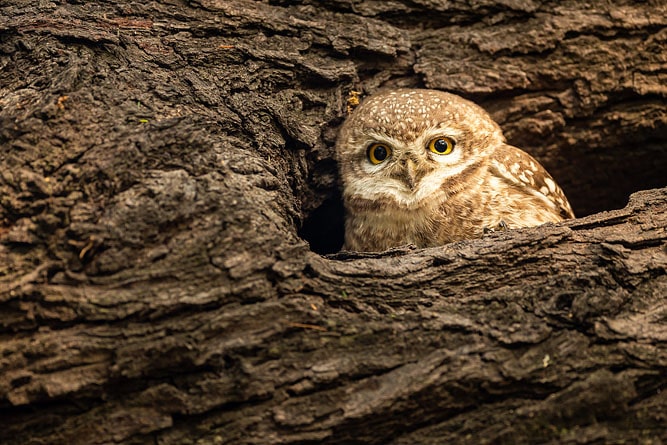
Ecosystem of Keoladeo National Park
The Keoladeo National Park is covered with wet grasslands, swamps and woodlands that are spread across one-third of 7100 acres of land. The sanctuary is mixed with deciduous forest and dry grassland, with most parts being semi-arid and covered with shrubs and medium-sized trees. The wetland includes alluvial soil and forms a part of the Indo-Gangetic plain. The natural depression results in many water bowls on the premises of the sanctuary.
The bird migration season is from October to March. Diverse species of aquatic birds from China, Afghanistan, Turkmenistan and Siberia take shelter in the Keoladeo National Park. The forest provides asylum to around 364 species of birds. The sanctuary is not only home to birds but also to around 27 species of mammals. It also treasures 50 diverse species of fish and 25 species of butterflies.
The vegetation of the Keoladeo National Park has scattered trees and shrubs distributed across the entire sanctuary like Syzygium cumini (Jamun), Prosopis cineraria (Kandi), Acacia nilotica (babul), Neolamarckia cadamba (Kadam trees), Capparis decidua (Karira), Zizyphus (Ber), Cynodon dactylon (Indian doab), Dichanthium annulatum (marvel grass), and Salvadora oleoides and Salvadora persica (Piloo) and 379 diverse species of floral plants. Land insects, worms, and molluscs are living in the forest in abundance forming the base of the food chain and maintaining the ecosystem.
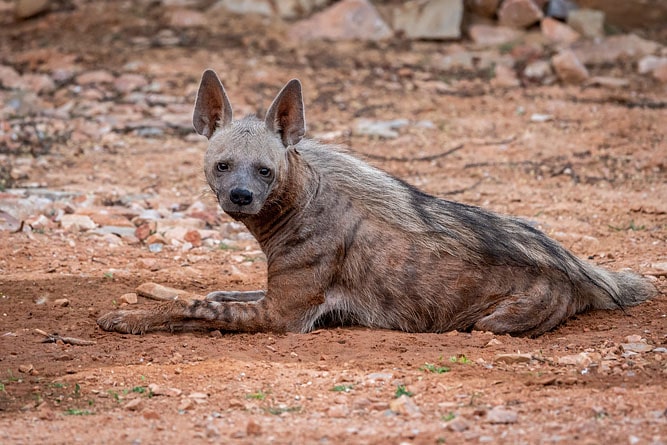
Entry fee and timings
The sanctuary opens at 6:00 am and closes at 6:00 pm. The entry fee for Indians is ₹75 and for foreign tourists, it is ₹500. There is a charge for video cameras.
Facts and tips about Keoladeo National Park
- During one duck shooting event in 1938, a total of 4,273 birds like mallards and teals were massacred by Viceroy Lord Linlithgow and the last big shoot was in 1964.
- The Keoladeo National Park is separated from the outside world with a two-metre-high wall to prevent any biotic interference thus making it the only national park in India with a buffer zone.
- You can carry your meal and a binocular and have a small picnic as you enjoy the bird watching and greenery around you. The government has restricted all sorts of motor vehicles inside the sanctuary.
- Dive deeper into the forest before your tour guide decides the spots for you. The authentic vibe of the forest can be experienced once you step inside the national park.
Other attractions near Keoladeo National Park
- Fatehpur Sikri - 23 km
- Agra - 62 km
- Chand Baori (Abhaneri) - 104 km
- Jaipur - 183 km
FAQs about Keoladeo National Park
1. What are the safaris available at the Keoladeo National Park?
There are tonga safaris, along with horses, cycles and rickshaws inside the sanctuary. To rent a cycle you will have to provide your identification documents at the counter.
2. Do we need to hire a tour guide for the Keoladeo National Park?
There is no need for tour guides as the rickshaw drivers can give the information necessary during the tour. They are also patient and give you the time to click photographs.
3. How much time is required to tour the Keoladeo National Park?
The time limit depends on you. You can spend 2 hours or more or even the entire day since such greenery is absent in urban life.
